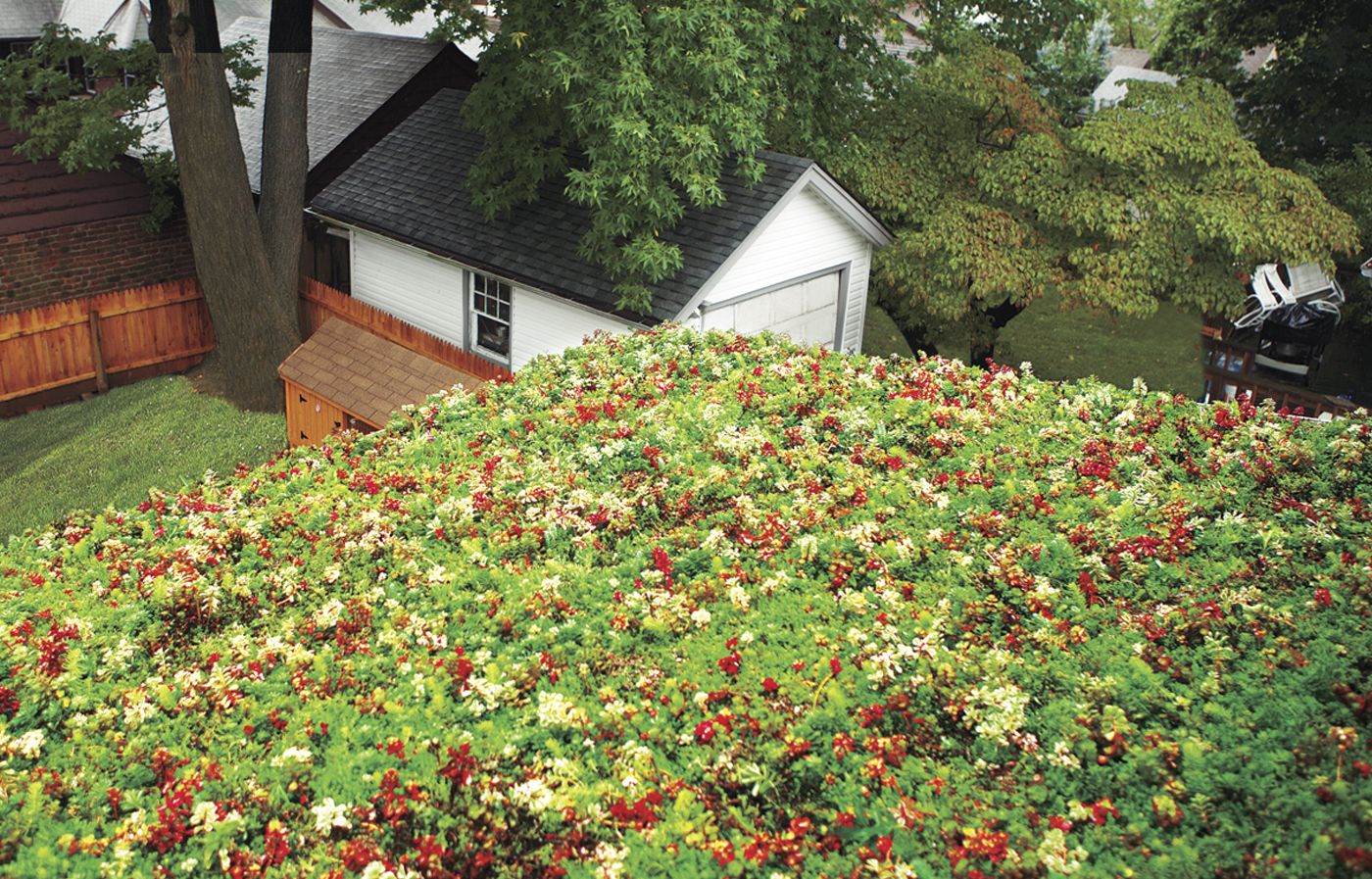Project details
Skill
Cost
Estimated Time
 Tape measure
Tape measure Drill/driver
Drill/driver Concrete saw
Concrete saw
A solidly engineered roof helps protect your house against the elements, of course, but the one installed over Sarah Jack and Scott Harris’s eat-in kitchen does that and more. Planted with hundreds of low-growing succulents, the little flat-roofed extension off their 1925 Colonial Revival helps slow down and filter rainwater runoff. Residential green roofs such as theirs protect natural waterways from oily street residue by lessening the chances that municipal storm-drain systems will overflow. It also keeps the room below it warmer in winter and as much as 6 to 8 degrees cooler in summer, thereby reducing utility costs. The 140 square feet of plantings helps absorb air pollutants, too, and—at $13 to $45 per square foot installed—should last about twice as long as a conventional roof. For all these reasons, the Teaneck, New Jersey, couple felt good about springing for the eco-conscious home improvement. But they also value its aesthetic appeal. “The roof looks so lively and colorful,” says Sarah. “It’s definitely improved our view.”
The LiveRoof modular system they chose is typical of residential models, consisting of plastic trays filled with a soilless engineered growing medium and fully mature sedum plants that can handle both deluge and drought. At 40 pounds each, the trays are heavy and meant to be installed by a certified contractor; R&S Landscaping did the job here. See how this roof went from bare to bountiful—plus the latest on living roof DIY options.
Shown: Hardy sedums are most popular for green roofs because they thrive in a soilless growing medium and are drought tolerant. They just need a yearly trim and occasional fertilizer to look their best. Homeowners can choose from a palette of suitable plants. Sedum spurium ‘Tricolor’ is one of the most ornamental.
Step 1
Prep the Roof
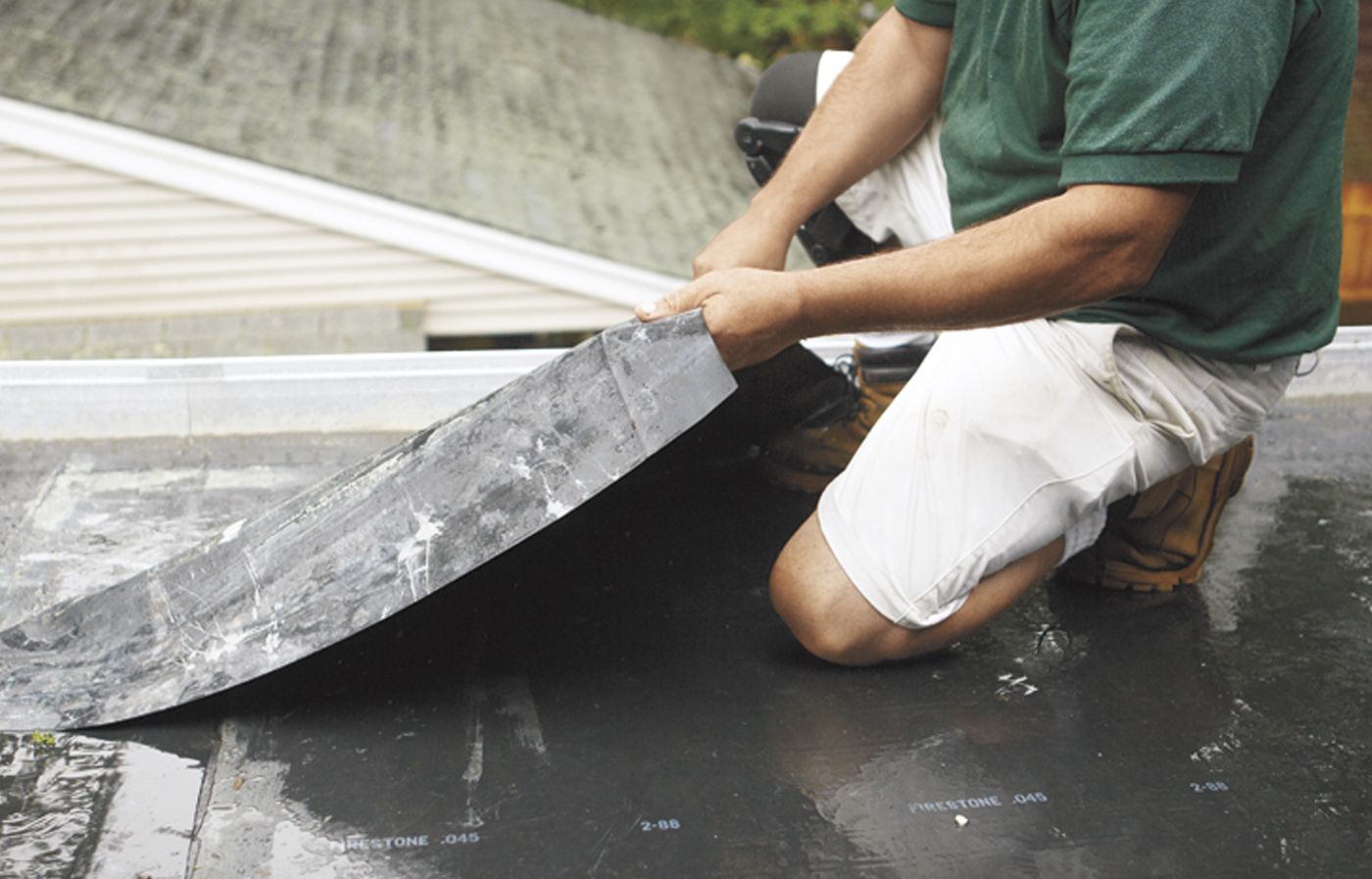
Even a flat roof should have some pitch so that it sheds water toward gutters; for a green-roof installation, that pitch should be at least ¼ inch per foot of run. Before the plants go up, a structural engineer should check to ensure that the roof can support the weight of the engineered growing medium and plants. When saturated, each tray in this system adds up to 30 pounds of load per square foot, which can stress a traditional roof built to support about 25 pounds. For this project, the roof was built to withstand the added load and then covered with a waterproofing membrane. Here, green-roof installer Rob Gaffney adds a second layer of rubber roofing membrane as a root barrier to prevent damage to the roof.
Pro advice
“Get a structural engineer to tell you what your existing roof needs to support the weight of a green roof. You might have to add more joists, strengthen existing ones, or add bracing.”
—Tom Silva, This Old House general contractor
Step 2
Add Planted Trays
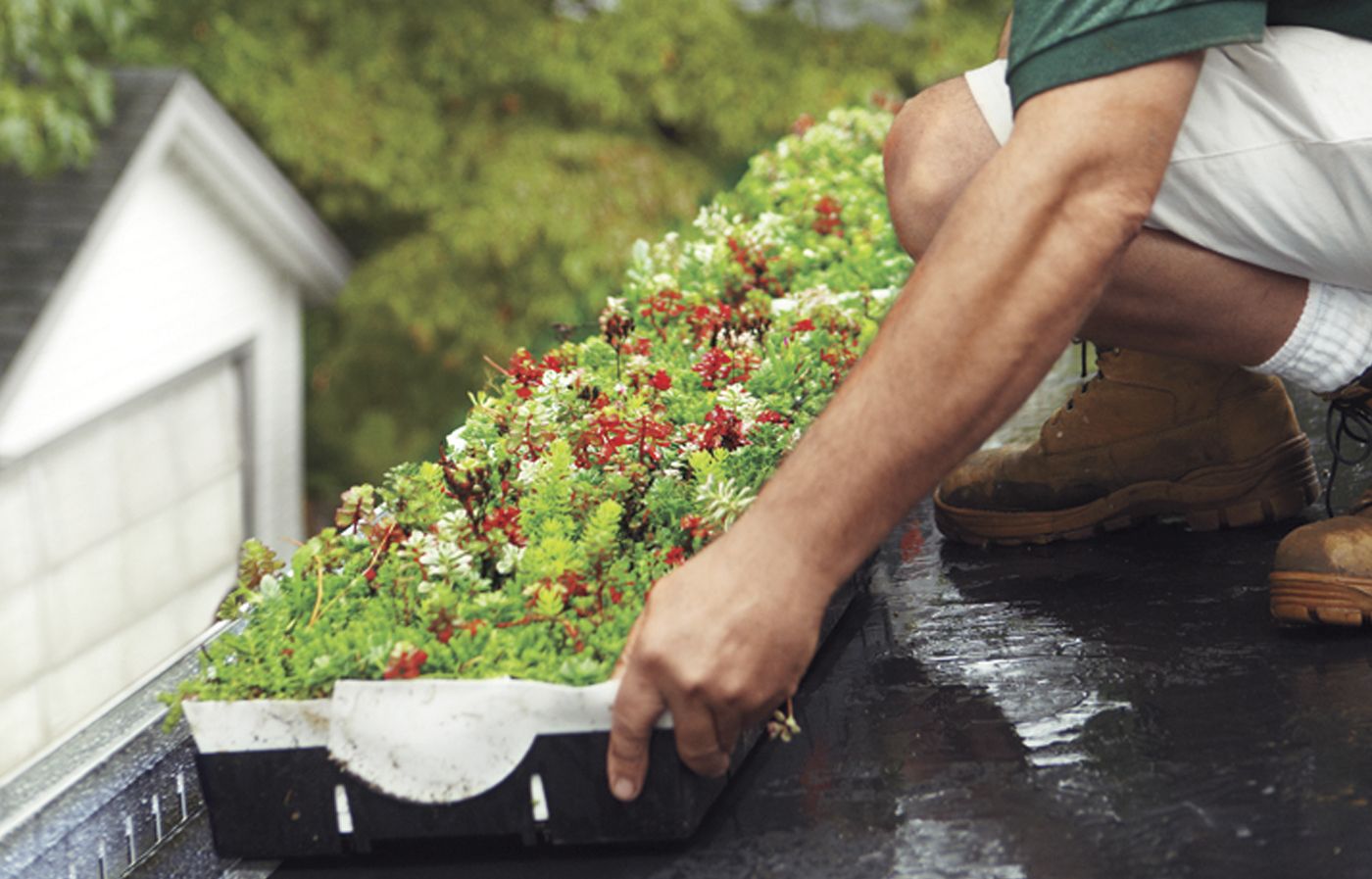
The 1-by-2-foot black polypropylene trays—planted four months earlier and nurtured at a nursery—arrive by truck 95 percent covered with vegetation. They come stacked in racks that are wrapped in plastic to secure them for shipping. The plastic is removed after the trays are unloaded, to keep the plants from overheating; the trays are moved by forklift (in this case) or crane to the rooftop. Before the trays can be installed, decorative L-shaped aluminum edging is temporarily weighted down around the edge of the roof where it will cover the sides of the trays. Starting in a corner and working right to left, the 40-pound planted trays are placed in rows on the roof and inside the edging. Installers start setting the trays at the lowest end of the roof, moving across and up the roof’s slope.
Step 3
Connect the Trays
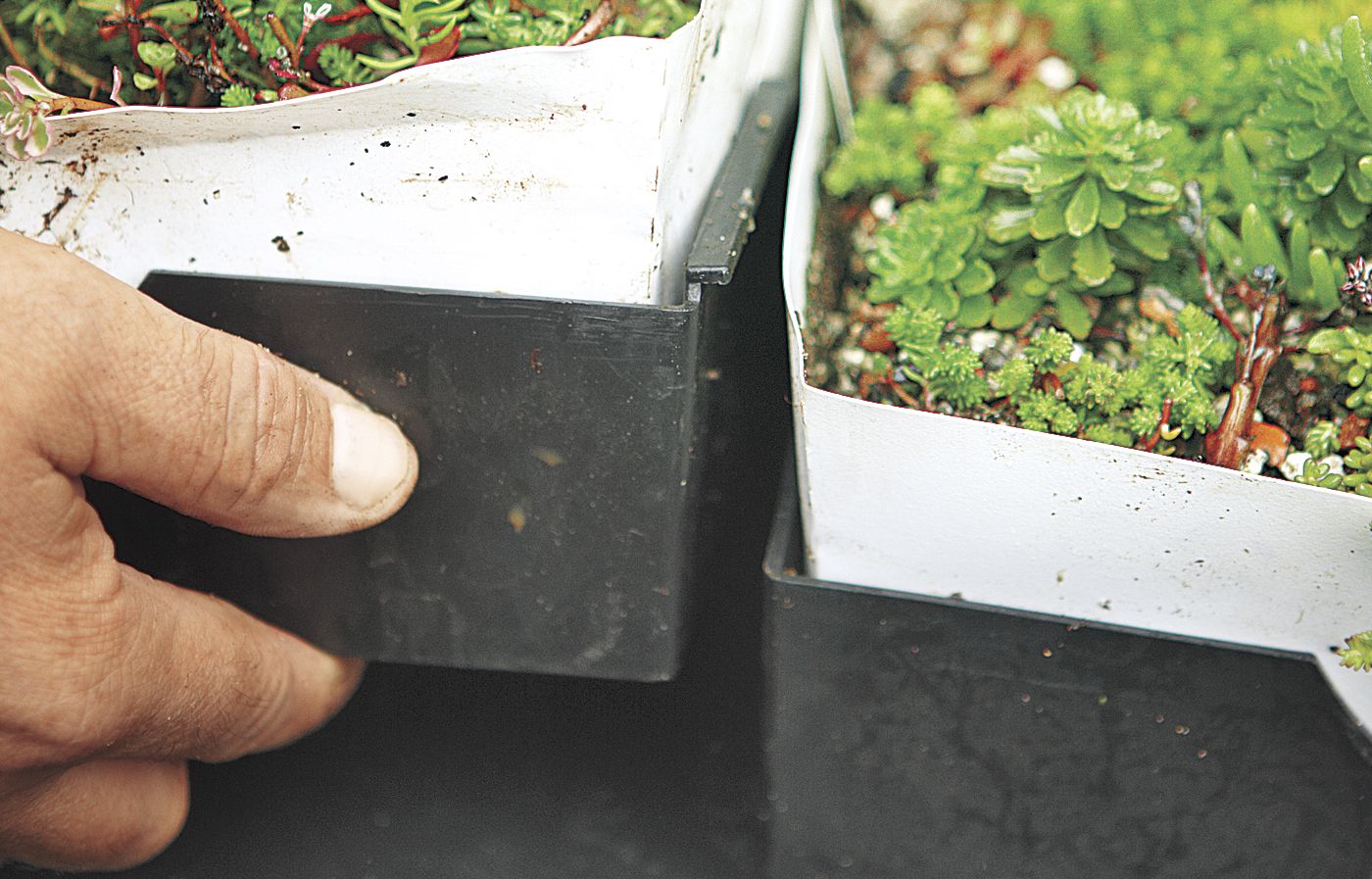
With a modular system like the one used here, any tray can be removed from the roof for maintenance without disturbing the others. In this system, plastic lips on the front and right sides overlap the left and back sides of neighboring trays for stability, creating a blanket that eliminates seams and reduces temperature fluctuations. Feet built into the underside of the trays keep them elevated ½ inch above the roof’s surface so that runoff can easily flow underneath toward the gutters.
Step 4
Cut Trays to Fit
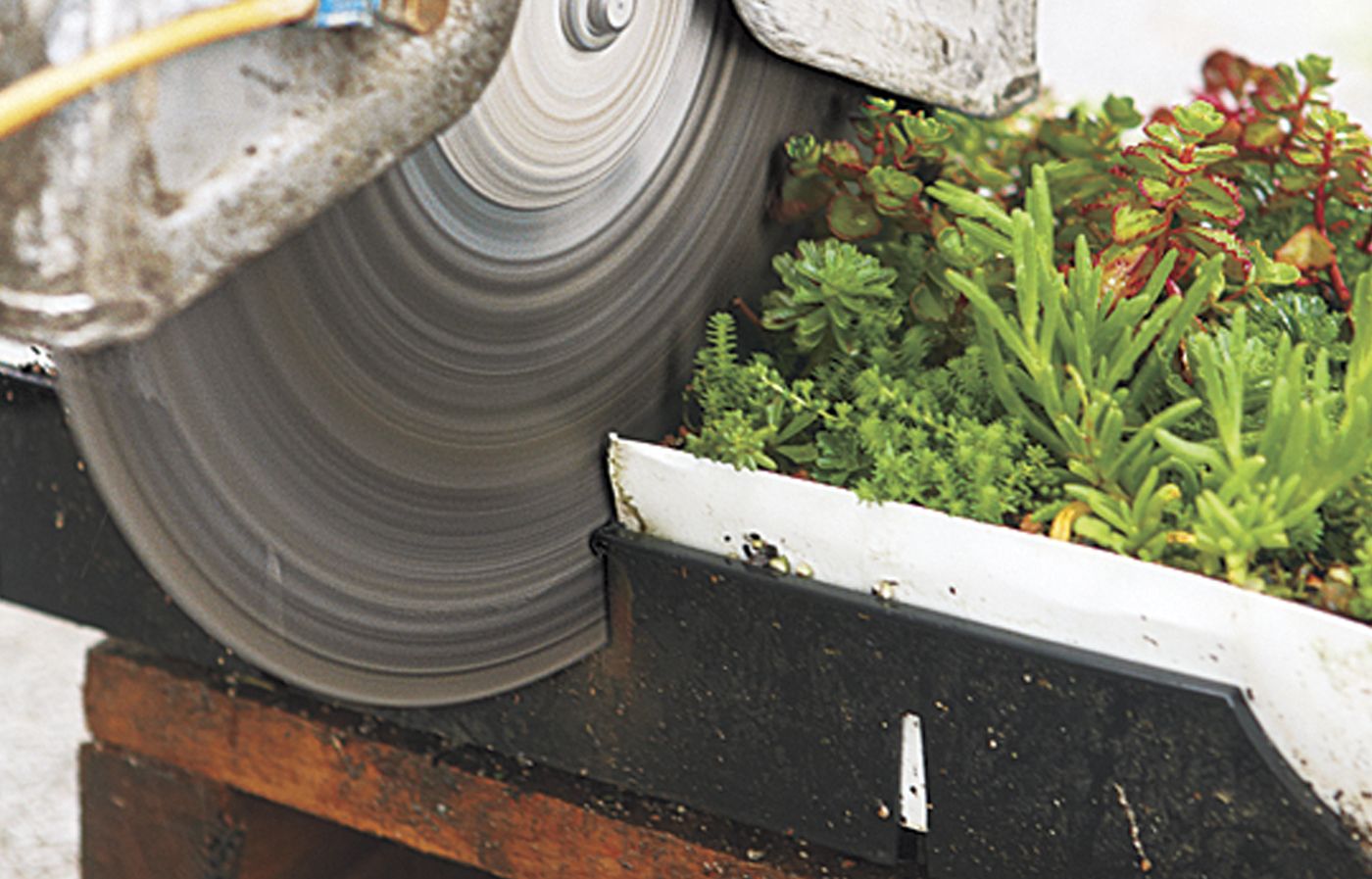
Usually, trays have to be cut to fit between the last full tray in a row and the edging. An installer measures for each end piece, then transfers his mark to a full tray with a wax pencil. Because the trays are filled with a growing medium made of tough aggregate, a gas-powered concrete saw fitted with a masonry blade is used to cut the trays. The cut end butts against the last full tray in the row. On this job, one installer laid the rows of trays, another took measurements for the end pieces, and a third made cuts on the ground before sending a few rows’ worth of end pieces up to the roof.
Step 5
Remove Soil Elevators
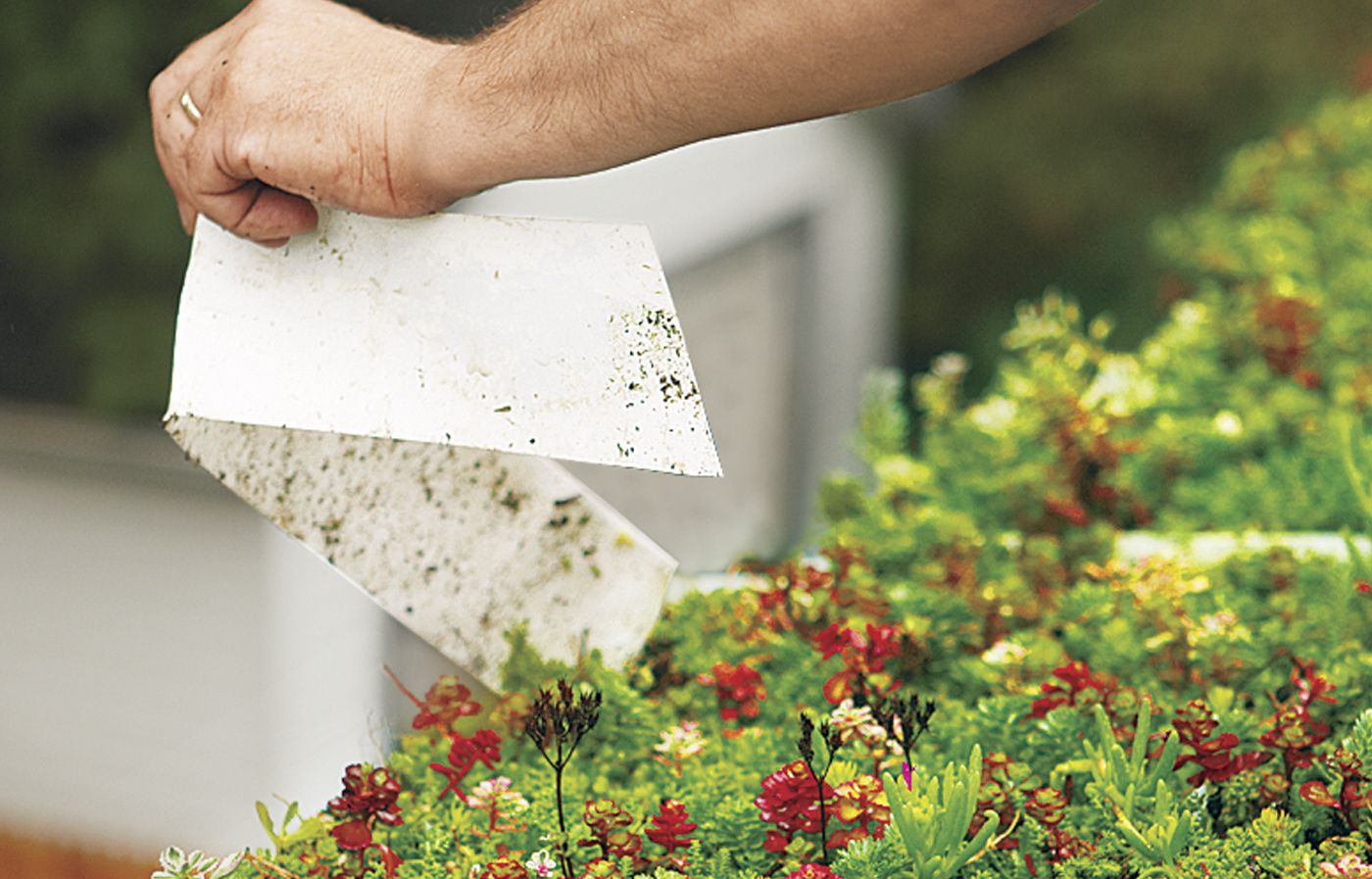
Each tray arrives fitted with a 4-inch-wide band of white plastic, called a soil elevator, that allows the growing medium to rise 1 inch above the tray. Along with the curves built into the sides of each tray, the added height allows soil-to-soil contact between the trays so that water, nutrients, and beneficial organisms can move laterally among the trays. Sharing the available water reduces the chance that dry or excessively wet spots will develop. After a couple of rows of trays are in place, the installer pulls out the soil elevator at an angle to avoid removing the growing medium. This helps the roof blend together almost instantly and reduces air space between the trays, increasing the system’s insulating R-value.
Step 6
Fit the Last Modules
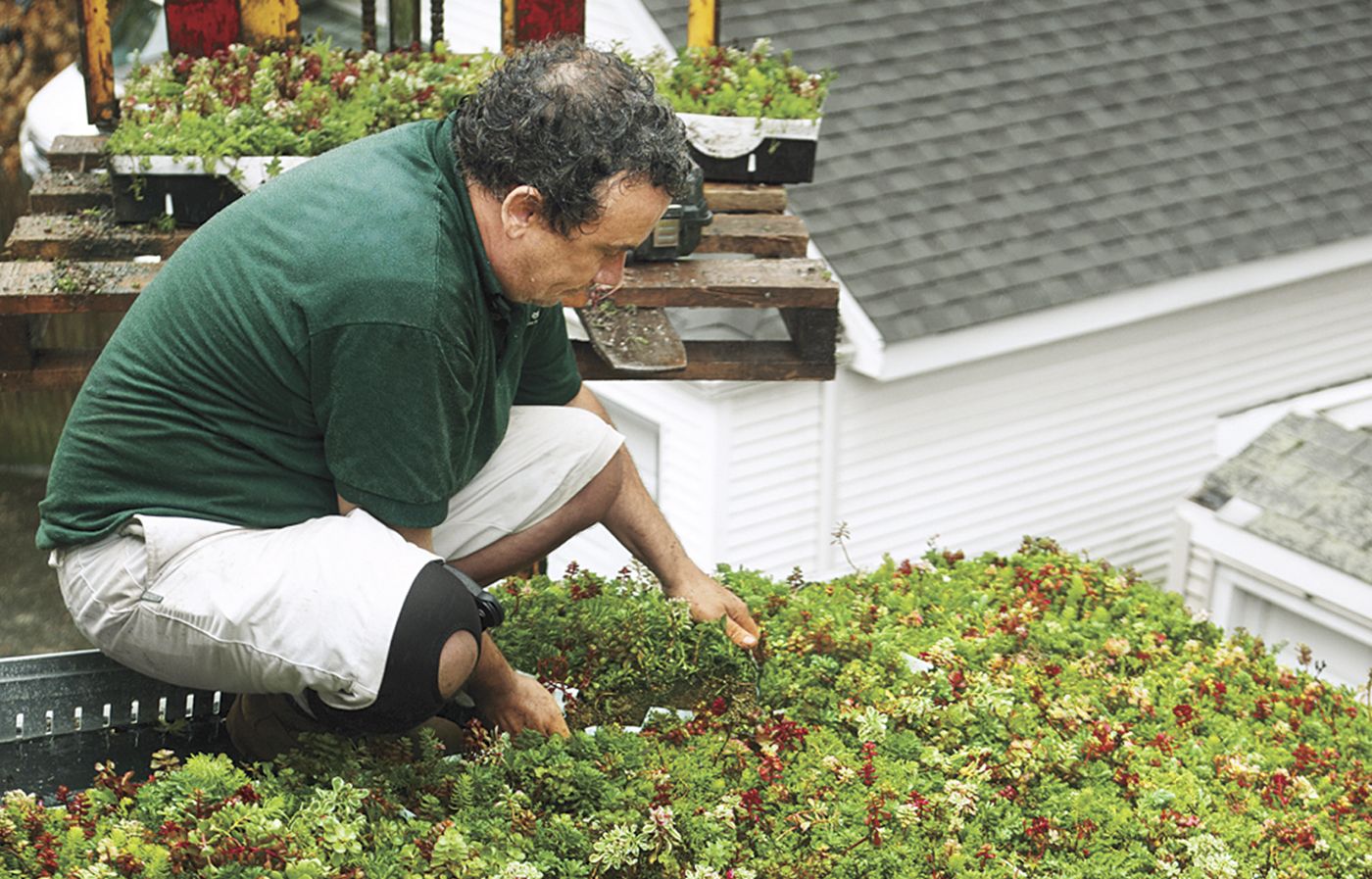
While the planted sedums can withstand some foot traffic, the best installation pattern is one in which installers can work themselves off the roof without walking too much on the plants. Then, from a ladder, they secure the edging to the sides of the modules with exterior-grade screws.
Step 7
Water Well
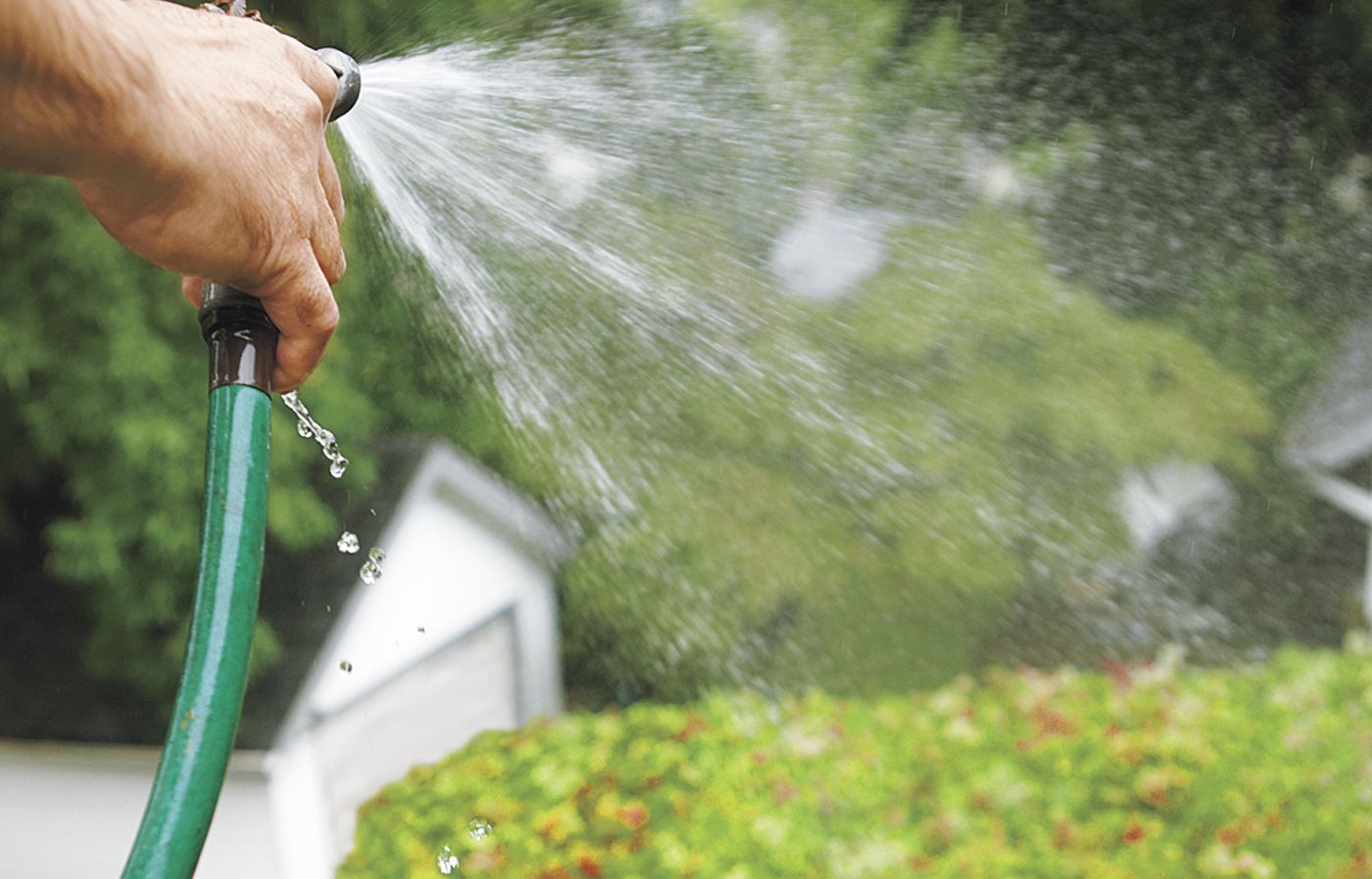
Once the trays are installed, they are watered to settle the soil. Green roof plants like these sedums usually don’t require irrigation unless there’s a four-week spell of high heat with less than 1 inch of rainfall. During dry spells, the growing medium can shrink, leaving it vulnerable to weeds. Sarah and Scott can irrigate this roof with a self-coiling garden hose threaded into the second-floor-bathroom sink faucet. Then a yearly haircut—and occasional fertilizer as indicated by a soil test—is all that’s needed to keep the green roof fit and trim.
